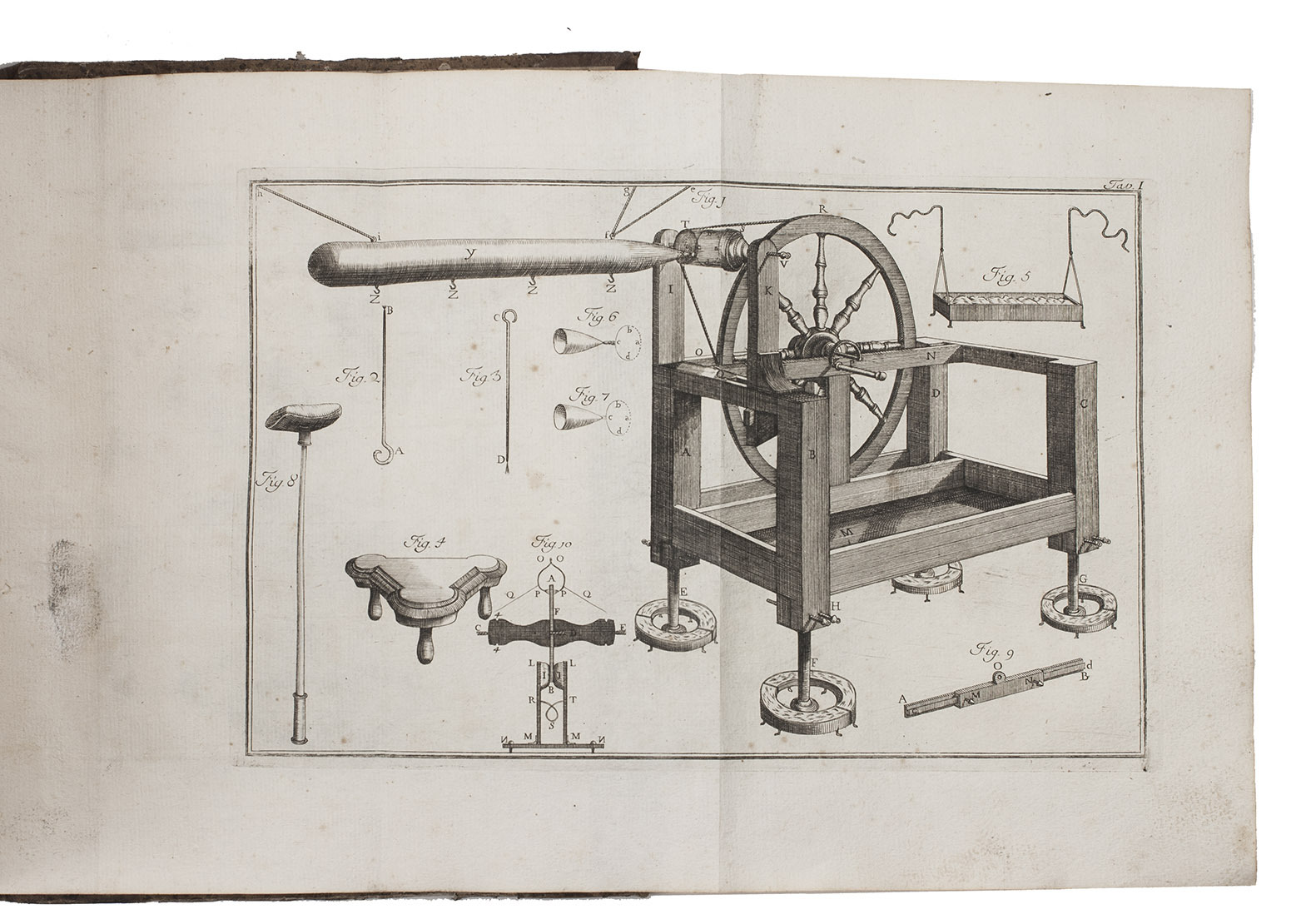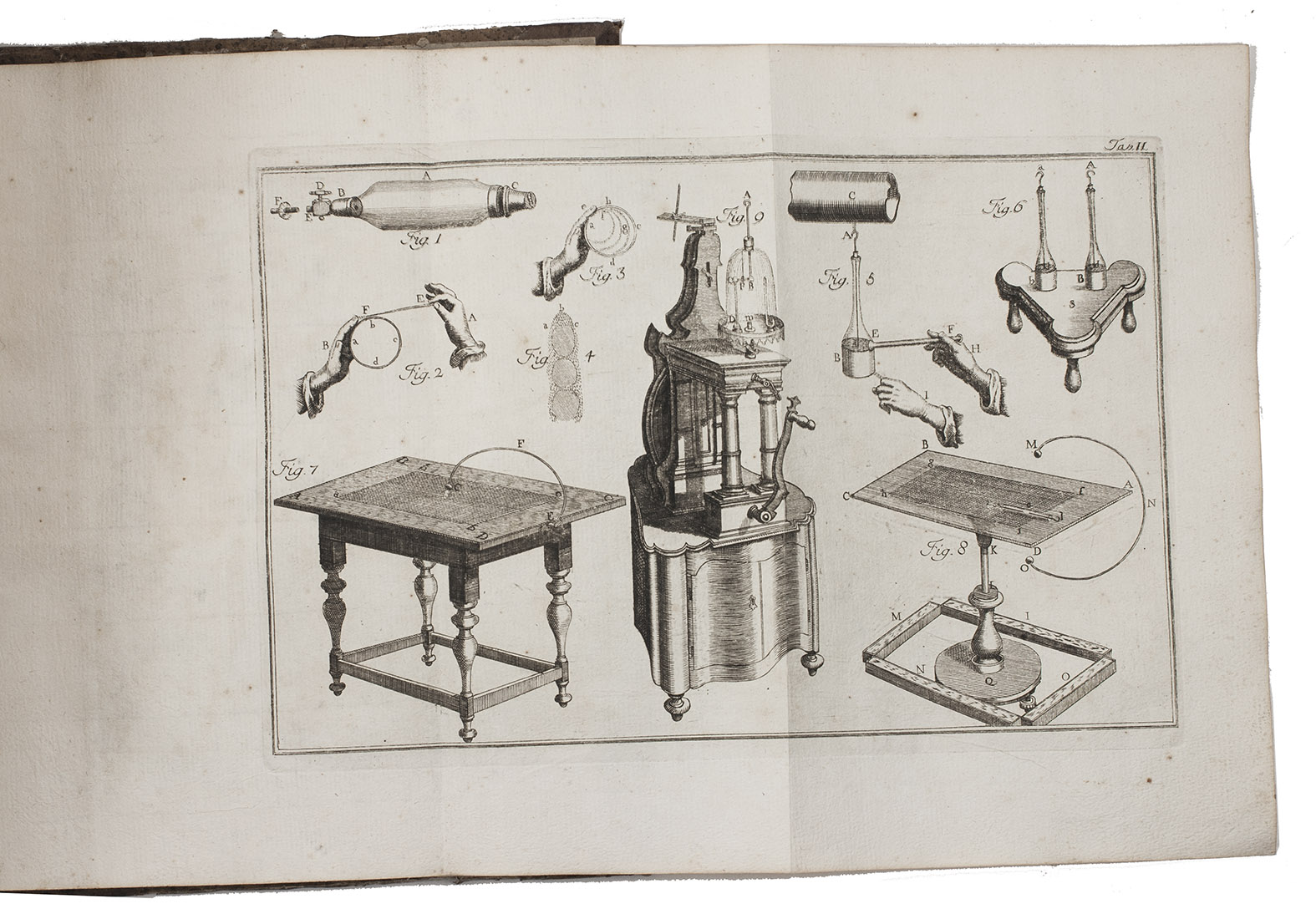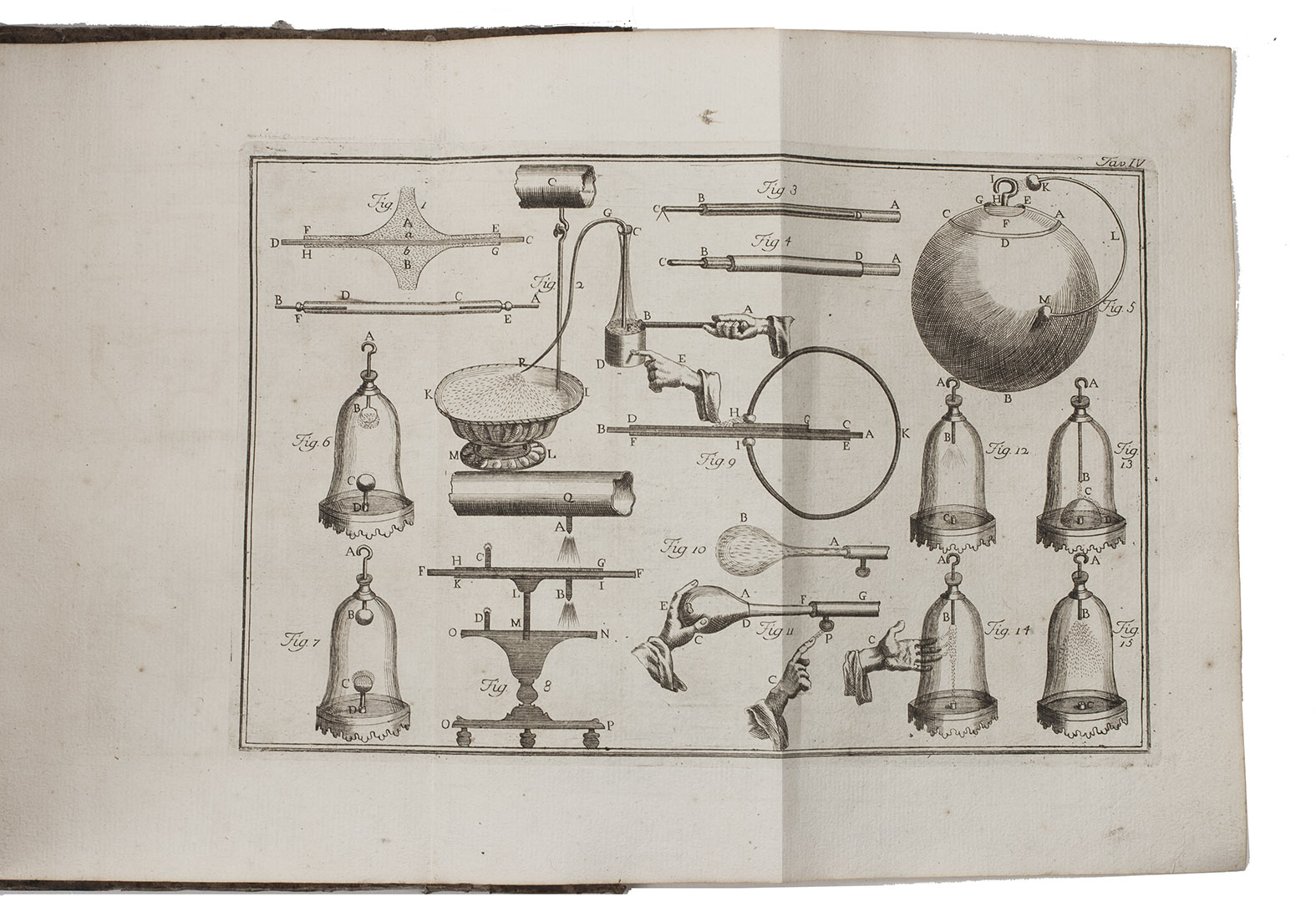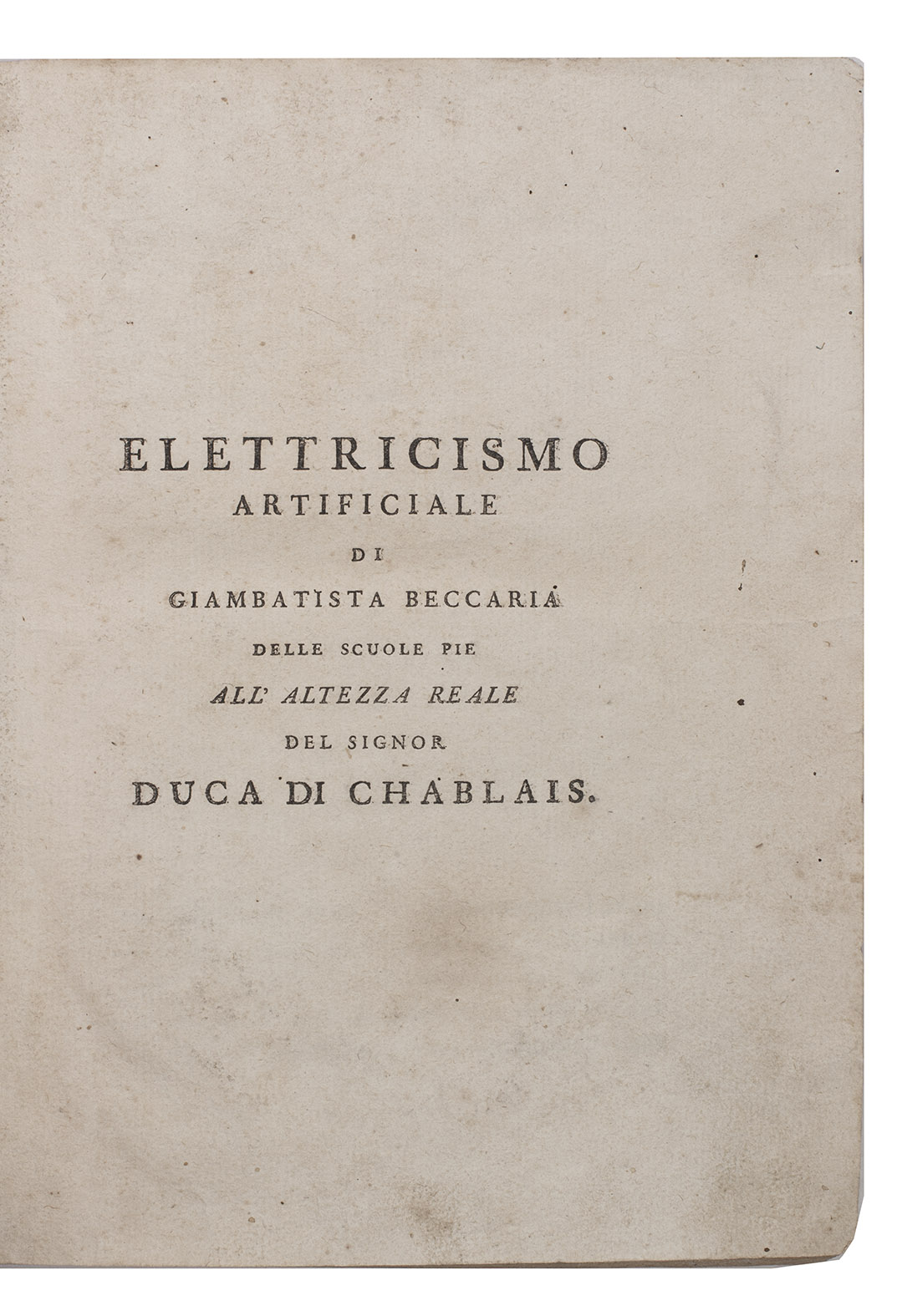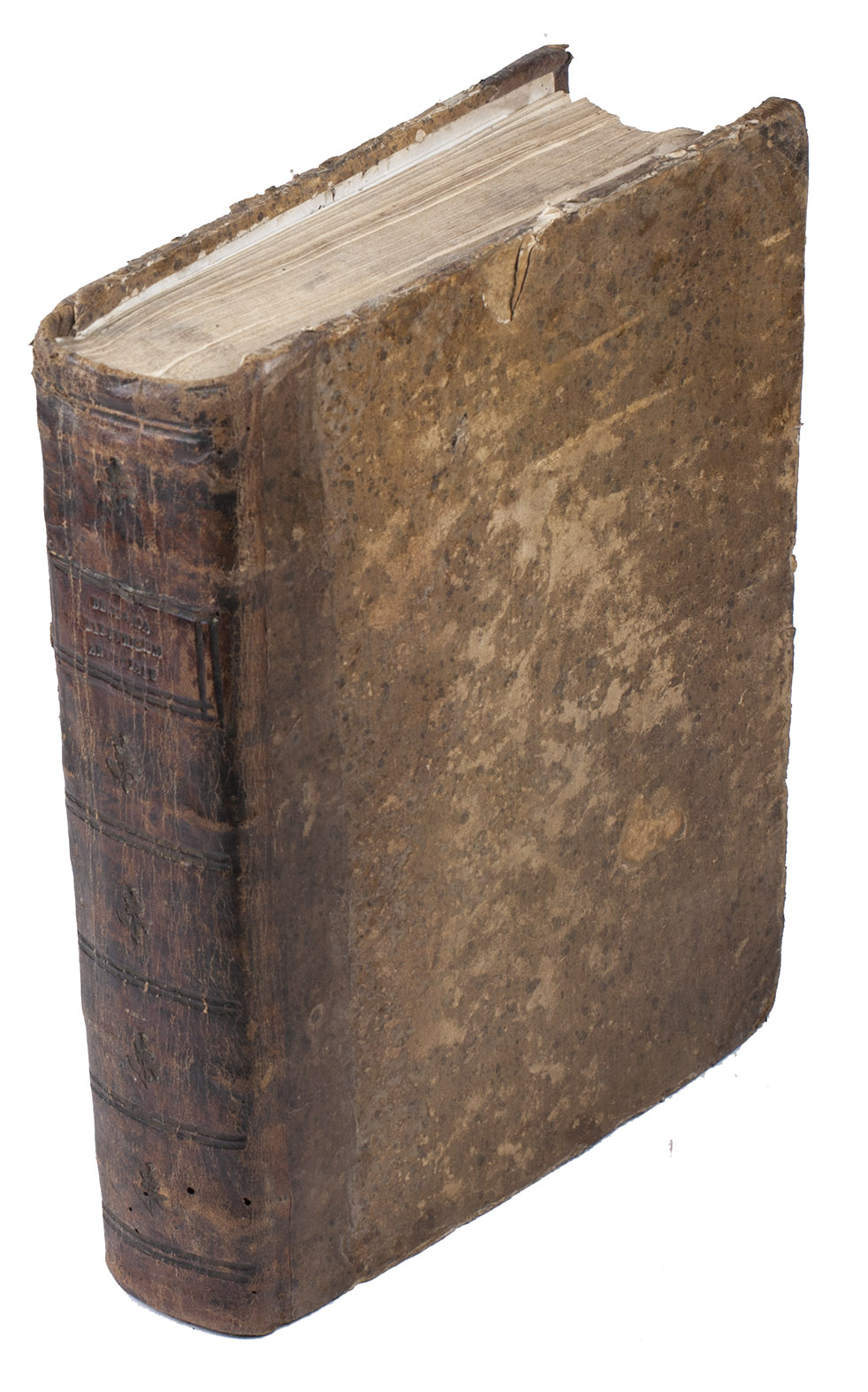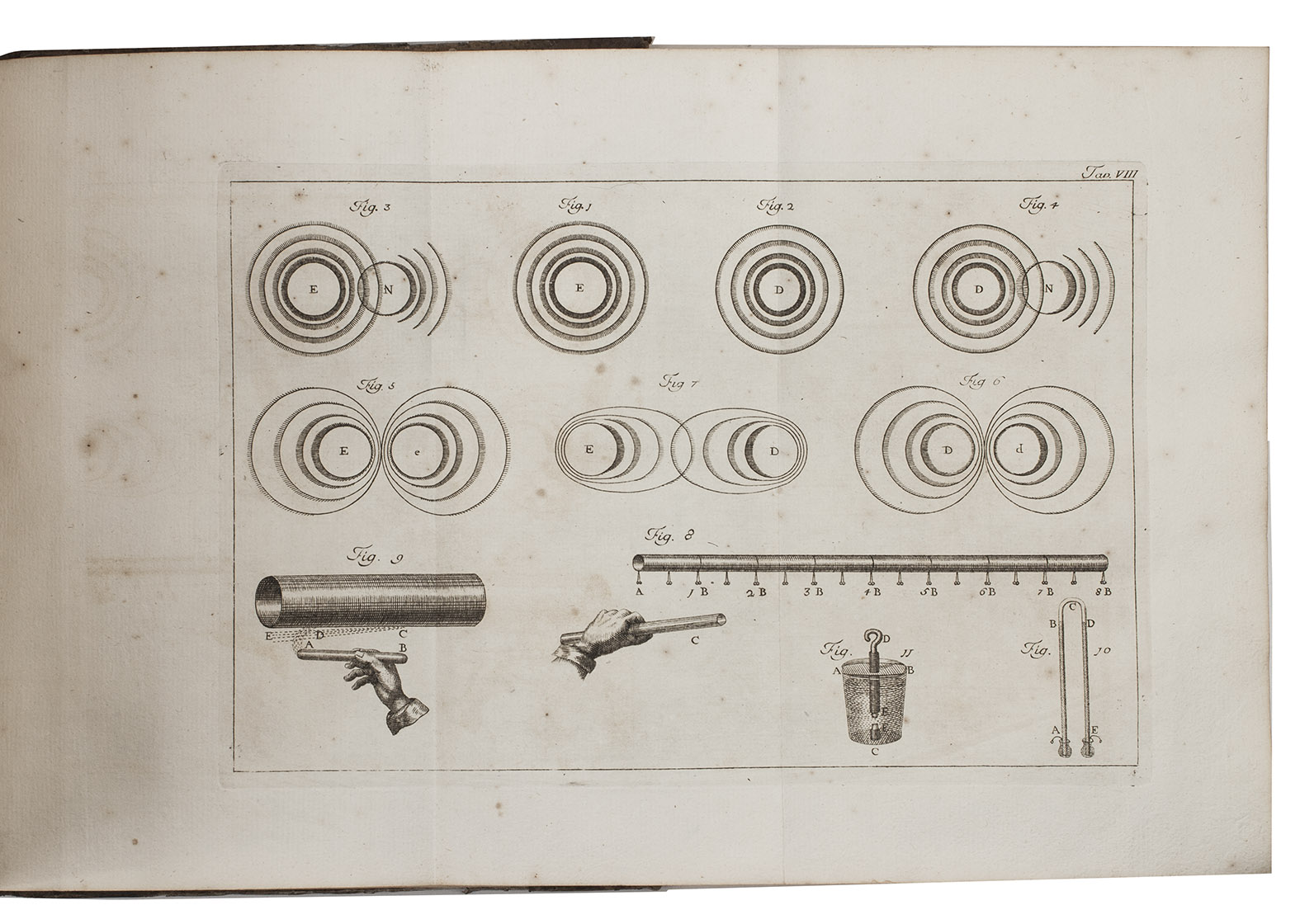BECCARIA, Giambatista.
Elettricismo artificiale ...
(Colophon: Turin, royal printing office [of the King of Sardinia], 1 June 1772). With 11 engraved folding plates.
With: (2) [BECCARIA, Giambatista]. Experimenta, atque observations, quibus electricitas vindex late constituitur, atque explicatur.
(Colophon: Turin, royal printing office [of the King of Sardinia]), [1769]. With letterpress folding table and 1 engraved folding plate. 2 works in 1 volume. 4to. Contemporary mottled half calf, gold-tooled spine. VIII, 439, [1]; [4], 66 pp.
€ 3,850
First editions of two works on electricity by the Italian physicist Giambatista Beccaria (1716-1781), who was appointed to the chair of physics at the university of Turin in 1748 and was one of the scholars who helped transform electrology into a scientific discipline defending the theory of Benjamin Franklin.
Ad 1: First edition, in the original Italian, of "Beccaria's last major contribution to the science of electricity" (DSB). It treats the theory of artificial electricity, especially in conducting bodies, deduced from the circulation of electricity in an ordinary apparatus. Beccaria explains and enlarges on Franklin's one-fluid theory of electricity. It contains descriptions of many experiments, with accompanying illustrations on the 11 engraved plates. It was translated into English, on Franklin's recommendation, in 1776.
Ad 2: First edition, in the original Latin, of a collection of experiments and observations explaining the nature and properties of residual static electricity. Beccaria's interest in electricity "was reawakened by the work of a former student, G.F. Cigna, who in 1765 published an account of experiments that developed Nollet's elaboration of Symmer's famous manipulations with electrified silk stockings. Beccaria pursued these experiments with all his skill, inventiveness, and energy, largely because they seemed to favour the anti-Franklinian double-fluid theory. ... Beccaria, who would not admit action-at-a-distance, supplied this deficiency with a complicated scheme of electrical atmospheres and "vindicating," or regenerating, electricity. These ideas ... subsequently led Volta, while seeking alternatives to them, to the invention of the electrophorus" (DSB).
Bookblock cracked, with some leaves a bit loose, a few leaves slightly browned and some occasional spots. Binding heavily rubbed, with much of the gold lost in the tooling on the spine. Good copy of two important works on electricity. Ad 1: DSB I, p. 548; ICCU TO0E 000864; Wheeler Gift 435bis; ad 2: DSB I, pp. 547-548; ICCU TO0E 000867; Wheeler Gift 424.
Related Subjects:
